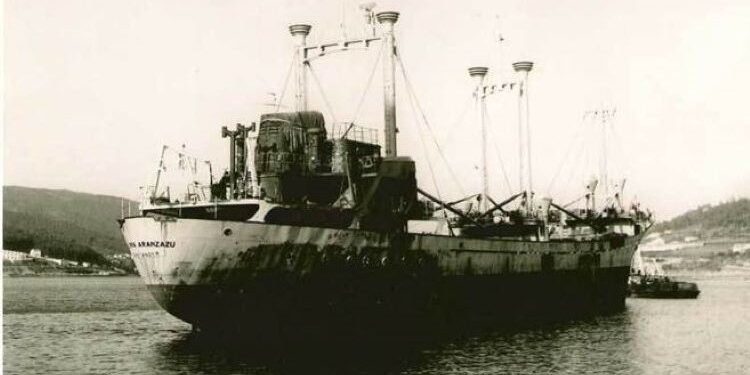Eduardo González
On September 13, 1964, the Spanish merchant ship 'Sierra Aránzazu' was the target, while en route to Havana, of a terrorist attack at the hands of an anti-Castro armed group trained and financed by the CIA. The incident, which resulted in the death of three Spanish sailors, caused a brief diplomatic incident with the United States in the midst of Franco's dictatorship, but everything was quickly forgotten.
The attack occurred 130 kilometers northeast of the island of Cuba. The United States had decreed an embargo against Fidel Castro's regime, but Francisco Franco's dictatorship kept merchandise traffic open with Cuba, which had been harshly criticized by anti-Castro groups.
That day, the 'Sierra Aránzazu', loaded with food, fabrics, farming tools, dolls and other products, was sailing through the Bahamas Channel in the direction of Havana when it was surrounded by two boats, one on the port side and the other to starboard. Hours earlier, a US Coast Guard maritime patrol plane had flown over the Spanish freighter several times at very low altitude.
Suddenly, and without prior warning, machine gun bursts and cannon shots began to come from the two boats on the bridge and the crew's accommodations, according to Tomás Vaquero Iglesias and Julio Antonio Vaquero Iglesias, pilot of the Merchant Navy. and historian, respectively, and both brothers of one of the deceased, José Vaquero Iglesias
The ship caught fire as a result of shots fired at the fuel tanks and the twenty men on the crew, some of them seriously injured, were forced to sail out in the open for twelve hours in a lifeboat. The captain of the merchant ship, Pedro Ibargurengoitia, 42 years old, and the third engineer, José Vaquero Iglesias, 23 years old, died during the crossing.
The crew were later rescued by a ship from the Netherlands, which did not prevent the death of the second officer, Javier Cabello, 30 years old. Once the incident was reported from the Dutch ship, the North American Government attended to the victims and the crew members and the bodies were transferred to the Guantánamo Bay Naval Base, in Cuba, by a United States Navy plane. On September 15, they arrived in San Juan, Puerto Rico, from where they were repatriated to Spain.
Despite attempts to attribute the attack to Castro forces, it was later learned that the perpetrators had been anti-Castro elements of the Revolutionary Recovery Movement, a terrorist group made up of Cuban exiles that operated from Central America and the Caribbean and was financed, trained and provided with ships, planes, weapons and information by the US Central Intelligence Agency (CIA). We are talking about the most turbulent period of the Cold War, just two years after the missile crisis in October 1962.
According to declassified sources revealed fifty years after the events, the attack had been authorized from Nicaragua by a Cuban CIA agent named Félix Rodríguez, who assured that it had been a "mistake" and that they had confused the Spanish freighter with the ' Sierra Maestra', the flagship of the Cuban Navy.
The news about the attack was picked up by the entire world press, except the North American press, which silenced it. In Spain, the Government issued a note of protest to the United States because it understood that the attack had occurred in areas controlled militarily by Washington and that, therefore, security in the area corresponded to the United States.
The Secretary of State, Dean Rusk, promised to cooperate with Spain in clarifying the facts, but things went no further. Two investigations were opened, one by the State Department, which never saw the light of day, and another by the FBI, which, according to Vaquero Iglesias' brothers, was “more of a diversionary maneuver than a true investigation.” As for the Franco Government, once the waters had calmed down after the initial impact in the Spanish press and the protest demonstrations in front of the US Embassy in Madrid and the North American Consulate in Vigo, they opted for silence, for oblivion and for diplomatic peace with Washington.
...







